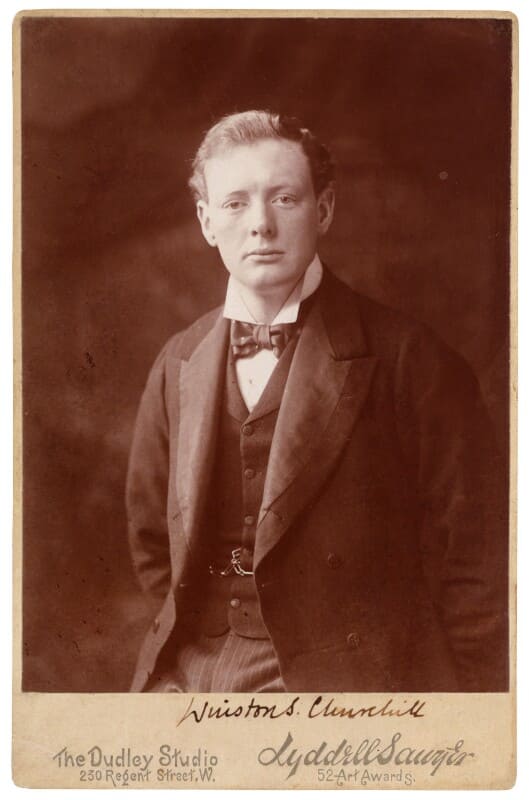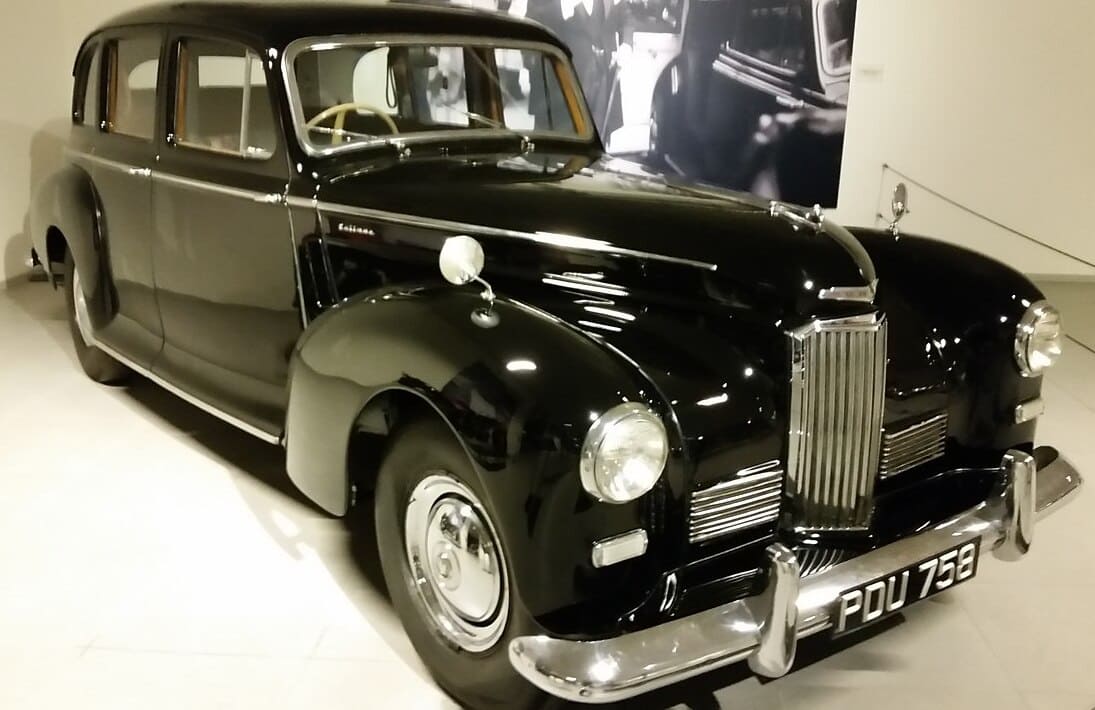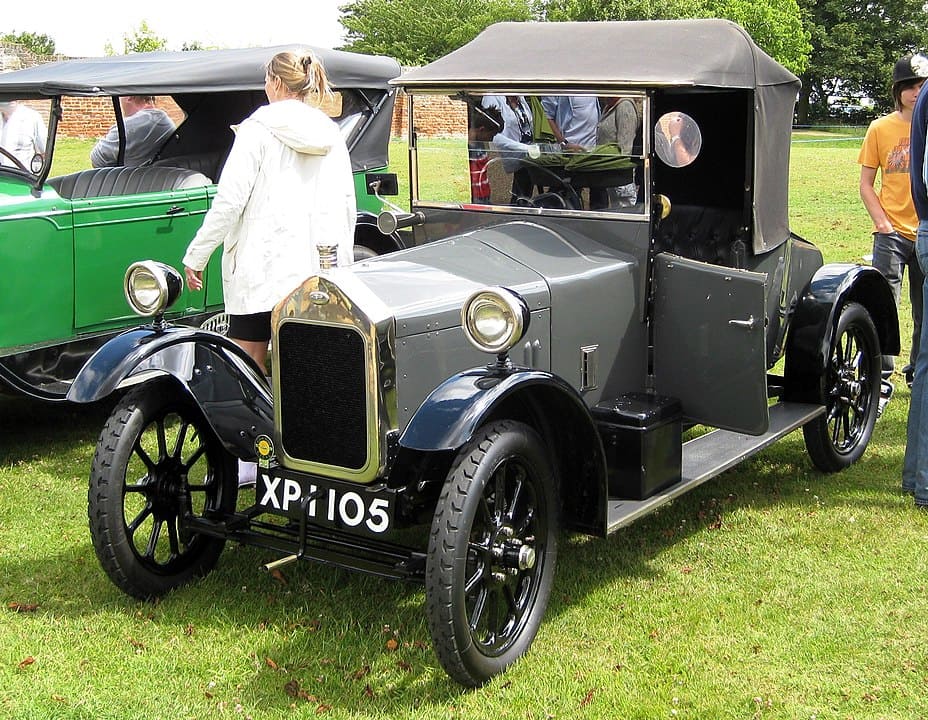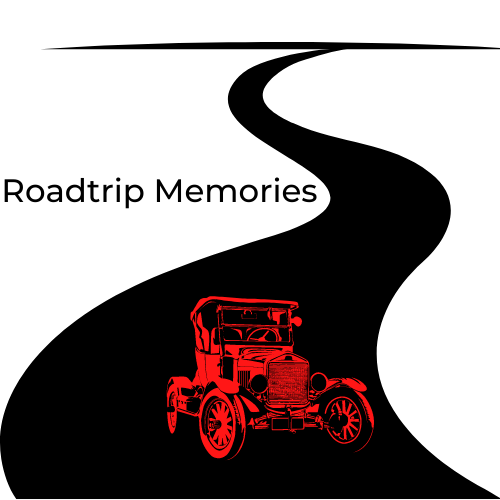
Winston Churchill in 1901, the year he bought his first car
– a Mors manufactured in France.
Author: Edward Lyddell Sawyer (1856-1927)
Without doubt Sir Winston Churchill will go down in history as one of the most influential people of the 20th century; a century when man’s ‘best machine’ was the gas (or petrol) guzzling internal combustion engine. So, did the dawn of the motor car and the adventurous soldier, writer, politician and statesman connect in any meaningful way? Churchill was born in 1874 and always had a soft spot for the horse drawn era, yet as a boy he must have been aware of inventors like Karl Benz introducing the world to horse-less machine-driven carriages. Churchill did embrace new technology and in 1901 when he was 26, he bought a French built Mors; this car was a disaster and could have been the inspiration for Harrold Lloyd’s famous silent movie ’Get Out and Get Under’. Mors, as you may know, is Latin for death but ‘Winnie’ didn’t give up on this motor car especially as, at this time, he was deputing all the grunt work of cranking, driving and repairing to his chauffer. By 1911 the Mors had been scrapped and a relieved Mr. and Mrs. Churchill spent £700 on a Napier 15hp landaulette, a grand looking set of wheels in which they toured Scotland and visited the King at Balmoral.
In the 1920’s Winston was often behind the wheel much to the concern of his passengers and the occasional traffic policeman. When taking his children to view their new country home at Chartwell, the enthusiastic and famous politician recruited passers-by to help him with a push-start; after an exhausting uphill attempt there was great embarrassment when Winston realised he had neither switched on the ignition nor released the hand-brake. More than once, the gear-crashing government minister had a brush with the law like in the mid-20’s when he mounted a pavement in Croydon to avoid a traffic-jam. His excuse of needing to catch a ferry to France didn’t avoid a ticking off from the police and it certainly failed to impress his passenger and bodyguard, Inspector Thomson from Scotland Yard. Churchill’s choice of car at the time was a Wolseley 10. He liked open-air Wolseley’s and Austin saloons but by the late 20’s Winston largely became a back seat driver and, once again, let a chauffeur take the wheel.

1954 Humber Pullman used by Sir Winston Churchill.
On display at the Louwman Collection in The Netherlands.
Credit: Alf van Beem

A 1923 Wolseley, similar to the cars driven by Churchill
during the decade when he was often seen behind the wheel.
His cars would almost certainly have been black.
Credit: Charles01

